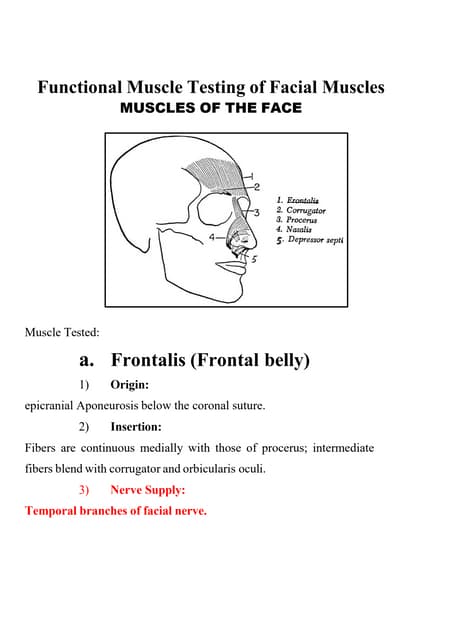E activity CS8013
Download as PPTX, PDF1 like293 views
Uday is a PhD student studying solid state chemistry in Dr. Simon Lawrence's research group. Solid state chemistry involves studying the synthesis, structure, and properties of materials in solid form. Over 80% of drugs are available as tablets or capsules, but 40% have issues with solubility and stability. Polymorphism, where compounds can exist in multiple solid forms, can impact properties and is important to drug development. Uday's current research focuses on using cocrystal technology to improve enantiopurity of organic compounds.
1 of 10
Download to read offline










Recommended
E activity slideshare



E activity slideshareUniversity College Cork
Ėý
This document discusses improving the solubility and stability of drug molecules through solid state chemistry approaches. It notes that 80% of drugs have solubility issues and 40% have stability problems. Common approaches to address this include polymorphs, amorphous forms, and salts, but each has limitations. Cocrystal technology is presented as a newer approach to modulate properties for drugs lacking ionizable groups. The document summarizes recent studies using this approach with curcumin and temozolomide to yield forms with better solubility and stability. It concludes these solid state approaches can optimize properties critical for a drug's pharmacological effects.Preformulation (chemical properties)



Preformulation (chemical properties)Tarun Parashar
Ėý
The document discusses various chemical properties and processes that can affect drug stability during preformulation, including oxidation, hydrolysis, racemization, and polymerization. It provides details on the mechanisms and factors that influence these processes, as well as methods to prevent or reduce degradation, such as adjusting pH, adding antioxidants or chelating agents, and controlling temperature and light exposure. Racemization can impact a drug's pharmacological and toxicological properties due to differences between its enantiomers. Polymerization involves monomers reacting to form polymer chains or networks and is exemplified by the darkening of glucose solutions.Decomposition and stabilization of pharmaceutical products



Decomposition and stabilization of pharmaceutical productsArshad Khan
Ėý
Drug stability:Stabilization of medicinal agents against common reactions like hydrolysis & oxidation. Accelerated stability testing in expiration dating of pharmaceutical dosage forms. Photolytic degradation and its prevention.Co crystalization



Co crystalizationSujit Kale
Ėý
The document discusses co-crystals, which are crystalline materials composed of an active pharmaceutical ingredient and a co-crystal former. Co-crystals can improve properties like dissolution rate and stability. They are formed through hydrogen bonding, pi-stacking, or van der Waals forces between components. Common preparation methods include solution crystallization, grinding, and antisolvent crystallization. Co-crystals are characterized using techniques like infrared spectroscopy, X-ray crystallography, and thermal analysis. Examples of co-crystallized drugs discussed include itraconazole, caffeine, and carbamazepine.1 lab physico-chemical_properties_of_drugs[1]![1 lab physico-chemical_properties_of_drugs[1]](https://cdn.slidesharecdn.com/ss_thumbnails/1labphysico-chemicalpropertiesofdrugs1-150306090358-conversion-gate01-thumbnail.jpg?width=560&fit=bounds)
![1 lab physico-chemical_properties_of_drugs[1]](https://cdn.slidesharecdn.com/ss_thumbnails/1labphysico-chemicalpropertiesofdrugs1-150306090358-conversion-gate01-thumbnail.jpg?width=560&fit=bounds)
![1 lab physico-chemical_properties_of_drugs[1]](https://cdn.slidesharecdn.com/ss_thumbnails/1labphysico-chemicalpropertiesofdrugs1-150306090358-conversion-gate01-thumbnail.jpg?width=560&fit=bounds)
![1 lab physico-chemical_properties_of_drugs[1]](https://cdn.slidesharecdn.com/ss_thumbnails/1labphysico-chemicalpropertiesofdrugs1-150306090358-conversion-gate01-thumbnail.jpg?width=560&fit=bounds)
1 lab physico-chemical_properties_of_drugs[1]Kym Anne Surmion II
Ėý
The document discusses the physicochemical properties of drugs that influence drug absorption and biological effects. It covers important physical properties like solubility, permeability and state of matter, as well as chemical properties including polarity, functional groups, and intermolecular forces involved in drug-receptor binding. Understanding these properties is essential for drug formulation, administration, and eliciting the desired pharmacological response.drug like property concepts in pharmaceutical design



drug like property concepts in pharmaceutical designDeepak Rohilla
Ėý
The document discusses key drug-like property concepts in pharmaceutical design, including solubility, permeability, metabolism, and transporters. It outlines common issues seen in drug development candidates related to these properties. Methods to improve properties like structural modification, prodrug approaches, and formulation development are presented. The importance of considering drug-like properties early in drug discovery is emphasized to help identify potential issues and guide optimization of candidates.oxidation of drugs



oxidation of drugsSamawiaIqbal
Ėý
it gives you a brief description that how oxidation can affect the stability of drug and causes degradationAustin Journal of Bioorganic & Organic Chemistry is a peer reviewed, open acc...



Austin Journal of Bioorganic & Organic Chemistry is a peer reviewed, open acc...Austin Publishing Group
Ėý
Austin Journal of Bioorganic & Organic Chemistry is a peer reviewed, open access journal publishes manuscripts in the following areas but not limited to structures, synthesis, kinetics, organic synthesis, physical organic chemistry, supramolecular chemistry and chemical biology.
Austin Journal of Bioorganic & Organic Chemistry accepts original research articles, review articles, commentaries, Letters, perspectives, and rapid communication on all the aspects of Bioorganic & Organic Chemistry.Seminar on polymorphism



Seminar on polymorphism023henil
Ėý
This document discusses polymorphism as part of a preformulation study seminar. It defines polymorphism as the ability of a substance to exist in two or more crystalline forms that have different molecular arrangements. The key points covered include:
- The need to study polymorphism to select the most stable and soluble form for formulations. Metastable forms often have better bioavailability.
- Various methods to identify and characterize polymorphs such as X-ray diffraction, thermal analysis techniques like DSC and TGA, and microscopy.
- Factors that can influence polymorphic transitions like temperature, humidity, solvents, grinding, and compression during tableting.
- The importance of understanding polymorphism for properties likeFuctional group determination of drugs in biological activity.



Fuctional group determination of drugs in biological activity.vishnu chinnamsetti
Ėý
The document discusses the role of functional groups in determining biological activity. It defines functional groups as atoms within drug molecules that confer specific chemical and physical properties. The key points are:
1) Functional groups determine properties like ionization, solubility, reactivity, stability, and metabolism. They impact drug shelf life, action duration, and susceptibility to metabolism.
2) There are several types of functional groups including acidic, basic, hydrophilic, intermediate polarity, and lipophilic groups. These groups impact properties like water solubility, lipid solubility, and ability to cross cell membranes.
3) The presence of particular functional groups is important for a drug's intended biological activity and receptor interactions. Understanding functionalPolymorphism



PolymorphismPrem Singh
Ėý
Polymorphism refers to when a substance exists in more than one crystalline form due to different arrangements of molecules in the crystal lattice. Over 50% of active pharmaceutical ingredients exhibit polymorphism. Common examples include sulfur and paracetamol. Polymorphic forms can differ in physical properties like solubility, melting point, stability, and dissolution rate. One form may be stable, while others are metastable. Polymorphism is classified as enantiotropic, where forms reversibly change below melting point, or monotropic, where only one form is stable below melting point. Identification methods include X-ray diffraction and thermal analysis. Polymorphism influences properties important for drug performance like flowability, dissolution, andImportant questions of Pharmaceutical organic Organic chemistry-1



Important questions of Pharmaceutical organic Organic chemistry-1Payaamvohra1
Ėý
This ppt gives you an idea about important Organic chemistry concepts and frequently asked questions .Do checkout other ppt for more info about other pharmacy subjectsRoutes of drug degredation



Routes of drug degredationSourav Shipu
Ėý
This document discusses the three main types of drug degradation: chemical, physical, and microbial. Chemical degradation includes hydrolysis, dehydration, isomerization, decarboxylation, elimination, oxidation, and photodegradation. Physical degradation involves crystallization, phase transitions, and moisture adsorption. Microbial degradation can occur if formulations become contaminated and depend on the type and amount of microbes present. Drug-excipient and drug-drug interactions can also lead to degradation through reactions. Maintaining proper storage conditions is important to prevent degradation via these routes. Pharmaceutical Degradation



Pharmaceutical DegradationSaharish Khaliq
Ėý
Pharmaceutical degradation can occur through physical, chemical, or microbiological processes. Physical degradation includes changes in appearance, properties like hardness or consistency, and polymorphic changes. Chemical degradation involves reactions like hydrolysis, oxidation, decarboxylation, isomerization, and polymerization that break down the drug. Microbial degradation is caused by microbial growth contaminating the product. Proper storage conditions and formulation design can help prevent degradation through control of factors like temperature, humidity, light exposure, and microbial contamination.Polymorphism: opportunity or problem?



Polymorphism: opportunity or problem?Covello Luca
Ėý
In this presentation are analysed the reasons behind the need to study polymorphism with practical examples.Lec 2 polymorphism



Lec 2 polymorphismDr manal Soub
Ėý
Polymorphism refers to different crystalline forms of the same substance that have different molecular arrangements and conformations. There are three main types of polymorphism: packing, conformational, and pseudopolymorphism (due to hydration or solvation). Polymorphs can be monotropic, where only one form is stable, or enantiotropic, where different forms are stable under different conditions. Monotropic polymorphs often have different melting points and properties. Polymorphism can impact drug properties like stability, dissolution, and bioavailability, so it is important to control the polymorphic form during drug development and manufacturing.IC Catalysis by FeSqMOF with pg nos



IC Catalysis by FeSqMOF with pg nosSoumyabrata Goswami
Ėý
This document describes a study that uses an iron-squarate based 3D metal-organic framework (FeSq-MOF) as a heterogeneous catalyst for transforming tetrazines into oxadiazole derivatives at room temperature. The FeSq-MOF was found to efficiently catalyze the reaction of various tetrazine substrates to their corresponding oxadiazole products in yields ranging from 53-97% within 1-24 hours, depending on the substrate. Testing confirmed the heterogeneous nature of the catalysis and that no iron leaching occurred. The FeSq-MOF could be recycled for multiple reaction cycles with only a moderate decrease in yield after the third cycle. This new catalytic method provides a simple, mild, andLec 1 state of matter p1



Lec 1 state of matter p1Dr Ahmad Abdulhusiaan Yosef
Ėý
Binding Forces Between Molecules , Solids and the Crystalline State , Phase Equilibria and the Phase
Rule
Drug stability 



Drug stability Swati Bharati
Ėý
This document provides an overview of a seminar presentation on drug stability given by Ms. Swati S. Bharati to Mumbai University. The presentation covers topics such as the importance of stability testing, degradation pathways including physical, chemical and microbial degradation, kinetic stability, and solution and solid state stability. It defines stability and the purpose of stability studies. Examples are provided to illustrate different types of degradation pathways and how they can be prevented.Importance of Polymorphs in Pharma Industry by dr. amsavel



Importance of Polymorphs in Pharma Industry by dr. amsavelDr. Amsavel A
Ėý
Polymorph-Introduction
Definition
Physical properties of drugs
Polymorph and it impact
Solubility & Dissolution &
Bioavailability & Pharmacology
Polymorph testing
NYSAS Solid State Spectroscopy Of Materials (Polymorphism)



NYSAS Solid State Spectroscopy Of Materials (Polymorphism)Mark_Sullivan
Ėý
This document discusses polymorphism in solid-state materials and spectroscopy techniques for characterizing polymorphs. It provides examples of polymorphic drugs and outlines the importance of identifying and quantifying polymorphs. Techniques like FTIR, Raman, terahertz spectroscopy, solid-state NMR, and vibrational spectroscopy combined with multivariate analysis can be used to distinguish, identify, and quantify polymorphs in materials. Understanding polymorphism is crucial for developing drugs and ensuring consistent quality and performance throughout development and commercialization.Drug likeness Properties



Drug likeness Propertiesnarsaiahchelimela
Ėý
This document discusses key drug-like properties that are important for drug discovery. It covers properties such as solubility, permeability, metabolic stability and how they impact pharmacokinetics and bioavailability. Modifying a molecule's structure can optimize these properties. For example, adding ionizable groups can increase solubility while reducing logP or molecular weight. Understanding how changes impact multiple properties is crucial for medicinal chemists to design drug candidates with balanced absorption and response profiles.Metastable polymorphism



Metastable polymorphismPrachi Joshi
Ėý
The document discusses the use of metastable polymorphs to enhance oral bioavailability. It begins by defining polymorphism as the ability of a compound to crystallize in more than one distinct crystal structure. Metastable polymorphs are excited crystalline states that have longer lifetimes than ordinary excited states but shorter than the ground state. Using metastable polymorphs can improve properties like solubility and bioavailability. Several techniques to produce metastable polymorphs are described, like seeding, additives, and solvent control. Case studies demonstrate how metastable forms of drugs like famotidine and terazosin hydrochloride were approved generically. Regulatory considerations for showing sameness to the reference listed drug are also covered.drug metabolism-hydrolysis



drug metabolism-hydrolysissrividhyasowrirajan
Ėý
Hydrolysis is a phase I drug metabolism reaction that introduces a water molecule to cleave drugs like esters, amides, hydrazides, and carbamates, making them more water soluble. It works by breaking bonds between functional groups on a drug molecule and adding hydrophilic groups to increase water solubility. Examples given include the hydrolysis of atropine, cocaine, procaine, and acetylcholine. The hydrolysis reaction removes ester and amide groups from drug molecules through the addition of a water molecule, converting them into their acid and alcohol/amine components.Extraction, identification and antioxidant activities of carotenoids from Ipo...



Extraction, identification and antioxidant activities of carotenoids from Ipo...Pragati Shah
Ėý
These presentation slides are about extraction, identification and antioxidant activities of carotenoids from Ipomoea aquatica Forsk. It is commonly known as Morning water glory or water spinach which is rich source of nutrients,, wide array of carotenoids are extracted and identified by GC- MS techniques by researcher arond the Globe. Antioxidant activity of natural products can be evaluated by different assay; some them are discussed in these slides.Mode of drug degradation of drugs



Mode of drug degradation of drugsBhavesh Maktarpara
Ėý
This document discusses various modes of drug degradation, including chemical, physical, and microbial degradation. It describes common chemical degradation pathways such as hydrolysis, oxidation, isomerization, and photodegradation. It also discusses factors that can influence the rate of degradation, such as excipients, moisture, temperature, and pH. Finally, it covers different kinetic models that can be used to describe drug degradation, such as pseudo-first order, pseudo-zero order, and reversible reactions.Bbbbb



Bbbbbbharath krishna
Ėý
Polymorphism is the ability of a solid material to exist in two or more crystalline forms. The document discusses the different types of polymorphism, factors that influence polymorphism, and methods to identify and produce polymorphs. It also outlines several applications of polymorphism in pharmaceuticals and organic chemistry. Specifically, selecting the right polymorph is important for drug stability, solubility, and bioavailability.Factors affecting drug degradation



Factors affecting drug degradationSnehal Patel
Ėý
PHYSICAL AND CHEMICAL DEGRADATION OF PHARMACEUTICAL PRODUCTS.
Physical Factors
Loss of volatile constituents
Loss of water
Absorption of water
Crystal growth
Polymorphism changes
Colour changes
Chemical factors
Hydrolysis
Oxidation
Carboxylation
Decarboxylation
Isomerization
Polymerization
Solid state stability and shelf-life assignment, Stability protocols,reports ...



Solid state stability and shelf-life assignment, Stability protocols,reports ...Durga Bhavani
Ėý
This document discusses guidelines for solid state stability and shelf-life assignment studies as outlined by ICH. It provides definitions of stability, the need for stability studies, and factors that influence drug degradation like temperature, moisture, light and interactions. The document outlines the types of studies, including real-time and accelerated stability studies. It discusses stability protocols, reports, and test conditions recommended by ICH to determine a drug's shelf life.Lecture 1.pptx



Lecture 1.pptxmehreenrehman2
Ėý
This document discusses the need for dosage forms and pre-formulation studies. It notes that dosage forms are needed to safely and conveniently deliver accurate drug doses while protecting drugs from environmental factors. Pre-formulation studies characterize the physical and chemical properties of drug substances to aid in the development of stable and effective dosage forms. These studies determine properties like solubility, stability, and compatibility with excipients. Understanding these properties provides insights to ensure quality during processing and storage.More Related Content
What's hot (20)
Seminar on polymorphism



Seminar on polymorphism023henil
Ėý
This document discusses polymorphism as part of a preformulation study seminar. It defines polymorphism as the ability of a substance to exist in two or more crystalline forms that have different molecular arrangements. The key points covered include:
- The need to study polymorphism to select the most stable and soluble form for formulations. Metastable forms often have better bioavailability.
- Various methods to identify and characterize polymorphs such as X-ray diffraction, thermal analysis techniques like DSC and TGA, and microscopy.
- Factors that can influence polymorphic transitions like temperature, humidity, solvents, grinding, and compression during tableting.
- The importance of understanding polymorphism for properties likeFuctional group determination of drugs in biological activity.



Fuctional group determination of drugs in biological activity.vishnu chinnamsetti
Ėý
The document discusses the role of functional groups in determining biological activity. It defines functional groups as atoms within drug molecules that confer specific chemical and physical properties. The key points are:
1) Functional groups determine properties like ionization, solubility, reactivity, stability, and metabolism. They impact drug shelf life, action duration, and susceptibility to metabolism.
2) There are several types of functional groups including acidic, basic, hydrophilic, intermediate polarity, and lipophilic groups. These groups impact properties like water solubility, lipid solubility, and ability to cross cell membranes.
3) The presence of particular functional groups is important for a drug's intended biological activity and receptor interactions. Understanding functionalPolymorphism



PolymorphismPrem Singh
Ėý
Polymorphism refers to when a substance exists in more than one crystalline form due to different arrangements of molecules in the crystal lattice. Over 50% of active pharmaceutical ingredients exhibit polymorphism. Common examples include sulfur and paracetamol. Polymorphic forms can differ in physical properties like solubility, melting point, stability, and dissolution rate. One form may be stable, while others are metastable. Polymorphism is classified as enantiotropic, where forms reversibly change below melting point, or monotropic, where only one form is stable below melting point. Identification methods include X-ray diffraction and thermal analysis. Polymorphism influences properties important for drug performance like flowability, dissolution, andImportant questions of Pharmaceutical organic Organic chemistry-1



Important questions of Pharmaceutical organic Organic chemistry-1Payaamvohra1
Ėý
This ppt gives you an idea about important Organic chemistry concepts and frequently asked questions .Do checkout other ppt for more info about other pharmacy subjectsRoutes of drug degredation



Routes of drug degredationSourav Shipu
Ėý
This document discusses the three main types of drug degradation: chemical, physical, and microbial. Chemical degradation includes hydrolysis, dehydration, isomerization, decarboxylation, elimination, oxidation, and photodegradation. Physical degradation involves crystallization, phase transitions, and moisture adsorption. Microbial degradation can occur if formulations become contaminated and depend on the type and amount of microbes present. Drug-excipient and drug-drug interactions can also lead to degradation through reactions. Maintaining proper storage conditions is important to prevent degradation via these routes. Pharmaceutical Degradation



Pharmaceutical DegradationSaharish Khaliq
Ėý
Pharmaceutical degradation can occur through physical, chemical, or microbiological processes. Physical degradation includes changes in appearance, properties like hardness or consistency, and polymorphic changes. Chemical degradation involves reactions like hydrolysis, oxidation, decarboxylation, isomerization, and polymerization that break down the drug. Microbial degradation is caused by microbial growth contaminating the product. Proper storage conditions and formulation design can help prevent degradation through control of factors like temperature, humidity, light exposure, and microbial contamination.Polymorphism: opportunity or problem?



Polymorphism: opportunity or problem?Covello Luca
Ėý
In this presentation are analysed the reasons behind the need to study polymorphism with practical examples.Lec 2 polymorphism



Lec 2 polymorphismDr manal Soub
Ėý
Polymorphism refers to different crystalline forms of the same substance that have different molecular arrangements and conformations. There are three main types of polymorphism: packing, conformational, and pseudopolymorphism (due to hydration or solvation). Polymorphs can be monotropic, where only one form is stable, or enantiotropic, where different forms are stable under different conditions. Monotropic polymorphs often have different melting points and properties. Polymorphism can impact drug properties like stability, dissolution, and bioavailability, so it is important to control the polymorphic form during drug development and manufacturing.IC Catalysis by FeSqMOF with pg nos



IC Catalysis by FeSqMOF with pg nosSoumyabrata Goswami
Ėý
This document describes a study that uses an iron-squarate based 3D metal-organic framework (FeSq-MOF) as a heterogeneous catalyst for transforming tetrazines into oxadiazole derivatives at room temperature. The FeSq-MOF was found to efficiently catalyze the reaction of various tetrazine substrates to their corresponding oxadiazole products in yields ranging from 53-97% within 1-24 hours, depending on the substrate. Testing confirmed the heterogeneous nature of the catalysis and that no iron leaching occurred. The FeSq-MOF could be recycled for multiple reaction cycles with only a moderate decrease in yield after the third cycle. This new catalytic method provides a simple, mild, andLec 1 state of matter p1



Lec 1 state of matter p1Dr Ahmad Abdulhusiaan Yosef
Ėý
Binding Forces Between Molecules , Solids and the Crystalline State , Phase Equilibria and the Phase
Rule
Drug stability 



Drug stability Swati Bharati
Ėý
This document provides an overview of a seminar presentation on drug stability given by Ms. Swati S. Bharati to Mumbai University. The presentation covers topics such as the importance of stability testing, degradation pathways including physical, chemical and microbial degradation, kinetic stability, and solution and solid state stability. It defines stability and the purpose of stability studies. Examples are provided to illustrate different types of degradation pathways and how they can be prevented.Importance of Polymorphs in Pharma Industry by dr. amsavel



Importance of Polymorphs in Pharma Industry by dr. amsavelDr. Amsavel A
Ėý
Polymorph-Introduction
Definition
Physical properties of drugs
Polymorph and it impact
Solubility & Dissolution &
Bioavailability & Pharmacology
Polymorph testing
NYSAS Solid State Spectroscopy Of Materials (Polymorphism)



NYSAS Solid State Spectroscopy Of Materials (Polymorphism)Mark_Sullivan
Ėý
This document discusses polymorphism in solid-state materials and spectroscopy techniques for characterizing polymorphs. It provides examples of polymorphic drugs and outlines the importance of identifying and quantifying polymorphs. Techniques like FTIR, Raman, terahertz spectroscopy, solid-state NMR, and vibrational spectroscopy combined with multivariate analysis can be used to distinguish, identify, and quantify polymorphs in materials. Understanding polymorphism is crucial for developing drugs and ensuring consistent quality and performance throughout development and commercialization.Drug likeness Properties



Drug likeness Propertiesnarsaiahchelimela
Ėý
This document discusses key drug-like properties that are important for drug discovery. It covers properties such as solubility, permeability, metabolic stability and how they impact pharmacokinetics and bioavailability. Modifying a molecule's structure can optimize these properties. For example, adding ionizable groups can increase solubility while reducing logP or molecular weight. Understanding how changes impact multiple properties is crucial for medicinal chemists to design drug candidates with balanced absorption and response profiles.Metastable polymorphism



Metastable polymorphismPrachi Joshi
Ėý
The document discusses the use of metastable polymorphs to enhance oral bioavailability. It begins by defining polymorphism as the ability of a compound to crystallize in more than one distinct crystal structure. Metastable polymorphs are excited crystalline states that have longer lifetimes than ordinary excited states but shorter than the ground state. Using metastable polymorphs can improve properties like solubility and bioavailability. Several techniques to produce metastable polymorphs are described, like seeding, additives, and solvent control. Case studies demonstrate how metastable forms of drugs like famotidine and terazosin hydrochloride were approved generically. Regulatory considerations for showing sameness to the reference listed drug are also covered.drug metabolism-hydrolysis



drug metabolism-hydrolysissrividhyasowrirajan
Ėý
Hydrolysis is a phase I drug metabolism reaction that introduces a water molecule to cleave drugs like esters, amides, hydrazides, and carbamates, making them more water soluble. It works by breaking bonds between functional groups on a drug molecule and adding hydrophilic groups to increase water solubility. Examples given include the hydrolysis of atropine, cocaine, procaine, and acetylcholine. The hydrolysis reaction removes ester and amide groups from drug molecules through the addition of a water molecule, converting them into their acid and alcohol/amine components.Extraction, identification and antioxidant activities of carotenoids from Ipo...



Extraction, identification and antioxidant activities of carotenoids from Ipo...Pragati Shah
Ėý
These presentation slides are about extraction, identification and antioxidant activities of carotenoids from Ipomoea aquatica Forsk. It is commonly known as Morning water glory or water spinach which is rich source of nutrients,, wide array of carotenoids are extracted and identified by GC- MS techniques by researcher arond the Globe. Antioxidant activity of natural products can be evaluated by different assay; some them are discussed in these slides.Mode of drug degradation of drugs



Mode of drug degradation of drugsBhavesh Maktarpara
Ėý
This document discusses various modes of drug degradation, including chemical, physical, and microbial degradation. It describes common chemical degradation pathways such as hydrolysis, oxidation, isomerization, and photodegradation. It also discusses factors that can influence the rate of degradation, such as excipients, moisture, temperature, and pH. Finally, it covers different kinetic models that can be used to describe drug degradation, such as pseudo-first order, pseudo-zero order, and reversible reactions.Bbbbb



Bbbbbbharath krishna
Ėý
Polymorphism is the ability of a solid material to exist in two or more crystalline forms. The document discusses the different types of polymorphism, factors that influence polymorphism, and methods to identify and produce polymorphs. It also outlines several applications of polymorphism in pharmaceuticals and organic chemistry. Specifically, selecting the right polymorph is important for drug stability, solubility, and bioavailability.Factors affecting drug degradation



Factors affecting drug degradationSnehal Patel
Ėý
PHYSICAL AND CHEMICAL DEGRADATION OF PHARMACEUTICAL PRODUCTS.
Physical Factors
Loss of volatile constituents
Loss of water
Absorption of water
Crystal growth
Polymorphism changes
Colour changes
Chemical factors
Hydrolysis
Oxidation
Carboxylation
Decarboxylation
Isomerization
Polymerization
Similar to E activity CS8013 (20)
Solid state stability and shelf-life assignment, Stability protocols,reports ...



Solid state stability and shelf-life assignment, Stability protocols,reports ...Durga Bhavani
Ėý
This document discusses guidelines for solid state stability and shelf-life assignment studies as outlined by ICH. It provides definitions of stability, the need for stability studies, and factors that influence drug degradation like temperature, moisture, light and interactions. The document outlines the types of studies, including real-time and accelerated stability studies. It discusses stability protocols, reports, and test conditions recommended by ICH to determine a drug's shelf life.Lecture 1.pptx



Lecture 1.pptxmehreenrehman2
Ėý
This document discusses the need for dosage forms and pre-formulation studies. It notes that dosage forms are needed to safely and conveniently deliver accurate drug doses while protecting drugs from environmental factors. Pre-formulation studies characterize the physical and chemical properties of drug substances to aid in the development of stable and effective dosage forms. These studies determine properties like solubility, stability, and compatibility with excipients. Understanding these properties provides insights to ensure quality during processing and storage.Preformulation studies



Preformulation studiesIshwariDeshmukh1
Ėý
This document discusses preformulation studies, which focus on the physical and chemical properties of a new drug compound and how those properties could impact drug performance and dosage form development. The goals of preformulation studies are to establish the physicochemical parameters, kinetics, stability, and compatibility of a new drug compound alone and when combined with excipients. Key physicochemical properties investigated include particle size, shape, crystallinity, solubility, hygroscopicity, and stability. Understanding these properties helps with rational dosage form design and evaluation of product efficacy and stability.Preformulation stability studies, physicochemical parameters affecting prefor...



Preformulation stability studies, physicochemical parameters affecting prefor...Kailash Vilegave
Ėý
Preformulation stability studies, physicochemical parameters affecting preformulation,need and objective of preformulation by kailash vilegave preformulation in pharmacy.pptx



preformulation in pharmacy.pptxdipika51
Ėý
This document discusses preformulation, which involves characterizing the physical and chemical properties of a new drug substance to develop a stable, safe, and effective dosage form. The goals are to establish properties like solubility, stability, and kinetics. Key aspects covered include solubility analysis, partition coefficient, chemical stability studies like hydrolysis and oxidation, polymorphism, and particle size analysis. Understanding these characteristics is essential for rational dosage form development and selection.Evaluation of Various Polymorphs by Different Techniques and Their Characteri...



Evaluation of Various Polymorphs by Different Techniques and Their Characteri...theijes
Ėý
This document reviews polymorphism in pharmaceutical compounds. It discusses how polymorphism can impact properties like solubility, dissolution rate, stability and bioavailability. Several techniques for characterizing polymorphs are described, including X-ray powder diffraction, differential scanning calorimetry, and infrared spectroscopy. The key types of polymorphism - enantiotropy, monotropy, and dynamic allotropy - are explained. The importance of evaluating and controlling polymorphism in drug development and manufacturing is emphasized.Preformultion study.pptx



Preformultion study.pptxAbulKawsarSoikot
Ėý
The document discusses preformulation studies that are conducted to characterize the physical, chemical, and mechanical properties of new drug substances. It covers topics like solubility, permeability, polymorphism, hygroscopicity, particle size, and powder flow properties. The objectives of preformulation are to develop stable, safe, and effective dosage forms and generate useful information for formulating an optimal drug delivery system. It also discusses various analytical methods used to characterize solid forms during preformulation.Crimson publishers-Crystal Engineering Applied to the Development of Novel Ph...



Crimson publishers-Crystal Engineering Applied to the Development of Novel Ph...CrimsonPublishersBioavailability
Ėý
Crystal Engineering Applied to the Development of Novel Pharmaceutical Solid Forms with Improved Bioavailability: the Co Crystals Case by Javier Ellena in Advancements in Bioequivalence & Bioavailability
Pharmaceutical co crystal technology has emerged as a promising strategy to enhance bioavailability of poorly water soluble drugs. This mini review presents a brief overview of pharmaceutical co crystals with particular focus on co crystal design, characterization techniques and impacts on drug bioavailability.
https://crimsonpublishers.com/abb/fulltext/ABB.000514.phpMedicinal chemistry -l-Second year-Fourth semester -medichem physicochemical ...



Medicinal chemistry -l-Second year-Fourth semester -medichem physicochemical ...manjusha kareppa
Ėý
Medicinal chemistry -l
-Second year-Fourth semester -
medichem physicochemical properties lecture 2 new.pptxThe A to Z of pharmaceutical cocrystals: a decade of fast-moving new science ...



The A to Z of pharmaceutical cocrystals: a decade of fast-moving new science ...Simon Curtis
Ėý
The A to Z of pharmaceutical cocrystals: a decade of fast-moving new science and patents -Orn Almarsson, Matthew L Peterson & Michael ZaworotkoPreformulation- Crystal, Amorphous, Polymorphism, Pseudo Polymorphism



Preformulation- Crystal, Amorphous, Polymorphism, Pseudo Polymorphismvijaysrampur
Ėý
- Preformulation involves studying the physical and chemical properties of a drug substance to aid in developing a safe, effective, and stable dosage form [1].
- Key goals of preformulation include characterizing the physical properties, compatibility with excipients, processing and storage conditions to ensure quality, and developing an optimal drug delivery system [2].
- Important physical properties studied include organoleptic characteristics, bulk properties like solubility and polymorphism, which can impact formulation structure and drug bioavailability [3].0 preformulation (1)



0 preformulation (1)muthulakshmi623285
Ėý
This document discusses preformulation for new drug development. A change in formulation, dosage, route of administration, or dosage form of an existing drug causes it to be considered "new" and requires safety and efficacy evaluation. Preformulation aims to optimize a drug's physical and chemical properties for a stable, effective dosage form. It involves characterizing the drug molecule and developing the dosage form. Some goals of preformulation include establishing the drug's physicochemical parameters, kinetic profile, physical characteristics, and compatibility with excipients. Polymorphism, or the ability of a drug to exist in different crystal forms, is also evaluated as it can impact properties like solubility, dissolution rate, and bioavailability.Complexation & protein binding



Complexation & protein bindingJILSHA123
Ėý
Sanjo College of Pharmaceutical Studies, Physical Pharmaceutics I , 3rd semester B.Pharm, Complexation & protein binding, Classification in detail, determination methods, application of complexes in pharmacy.Hejal parekh presentation



Hejal parekh presentationHejal Parekh
Ėý
This document discusses crystallinity and polymorphism. It begins by defining a crystal and crystallinity study. It then covers classifications of solids including amorphous, polymorphs, solvates, and clathrates. It compares properties of crystalline and amorphous forms. It also discusses crystal structure, habit, modification techniques, crystallization methods, analytical characterization methods, and importance in preformulation studies. Finally, it briefly mentions some latest crystallization techniques such as spherical crystallization and supercritical fluid crystallization.PREFORMULATION STUDY IN DESIGNING OF TABLET DOSAGES FORM.pptx



PREFORMULATION STUDY IN DESIGNING OF TABLET DOSAGES FORM.pptxSWASTIKPATNAIK1
Ėý
Preformulation studies are important for determining the physicochemical properties of new drug substances before developing dosage forms. This document outlines preformulation studies conducted for omeprazole magnesium and carbamazepine to aid in the development of enteric coated tablets and buccal mucoadhesive tablets, respectively. Key tests included solubility analysis, stability analysis, particle size characterization, and in vitro drug release studies. The results of these preformulation studies provided guidance on suitable excipients and helped establish formulation designs and processing parameters to achieve the desired drug delivery profiles.Preformulation part 1- Preformulation- Crystal, Amorphous, Polymorphism, Pseu...



Preformulation part 1- Preformulation- Crystal, Amorphous, Polymorphism, Pseu...vijaysrampur
Ėý
The document provides an introduction to preformulation, which involves studying the physical and chemical properties of a drug substance prior to formulation development. The goals of preformulation are to generate information to develop stable, bioavailable dosage forms and establish parameters that may affect drug performance. Key physical properties studied include organoleptic characteristics, bulk properties like solubility and polymorphism, and chemical properties like hydrolysis and oxidation. Understanding these characteristics is essential for designing optimal drug delivery systems. Preformulation is the first step in rational development of a dosage form.Physico-chemical Properties Affecting Drug Formulation.



Physico-chemical Properties Affecting Drug Formulation.Muavia Sarwar
Ėý
Physico-chemical Properties Affecting Drug Formulation.
Physical and chemical properties of Drug substancesUmesh bhandari



Umesh bhandariumeshlove4u
Ėý
The document discusses preformulation studies for solids. The objectives are to develop a stable, safe and effective dosage form with maximum bioavailability. Preformulation testing characterizes the physical, chemical and other properties of a new drug to aid in dosage form development. Studies include analyzing the drug's crystallinity, polymorphism, particle size, solubility, stability and compatibility with excipients. Analytical techniques used include microscopy, spectroscopy, chromatography and thermal analysis to understand the drug's properties and develop an optimal dosage form.Pfs



PfsShrikant Malpani
Ėý
This document discusses preformulation studies, which are important steps in developing an effective dosage form for a new drug. The objectives of preformulation studies are to establish the physico-chemical properties of the drug substance and generate information to design an optimal drug delivery system. Key aspects investigated include solubility, stability, compatibility with excipients, and parameters like particle size, bulk density and flow properties. Thorough preformulation work provides a foundation for formulation development and identifies potential problems to address.PHYSICOCHEMCAL PROPERTIES IN RELATION TO DRUG ACTION.pptx



PHYSICOCHEMCAL PROPERTIES IN RELATION TO DRUG ACTION.pptxakbar579946
Ėý
Physicochemical properties in relation to drug actionCrimson publishers-Crystal Engineering Applied to the Development of Novel Ph...



Crimson publishers-Crystal Engineering Applied to the Development of Novel Ph...CrimsonPublishersBioavailability
Ėý
Recently uploaded (20)
Inventory Reporting in Odoo 17 - Odoo 17 Inventory App



Inventory Reporting in Odoo 17 - Odoo 17 Inventory AppCeline George
Ėý
This slide will helps us to efficiently create detailed reports of different records defined in its modules, both analytical and quantitative, with Odoo 17 ERP.Functional Muscle Testing of Facial Muscles.pdf



Functional Muscle Testing of Facial Muscles.pdfSamarHosni3
Ėý
Functional Muscle Testing of Facial Muscles.pdfRRB ALP CBT 2 RAC Question Paper MCQ (Railway Assistant Loco Pilot)



RRB ALP CBT 2 RAC Question Paper MCQ (Railway Assistant Loco Pilot)SONU HEETSON
Ėý
RRB ALP CBT 2 RAC Question Paper MCQ PDF Free Download. Railway Assistant Loco Pilot Mechanic Refrigeration and Air Conditioning Important Questions.Odoo 18 Accounting Access Rights - Odoo 18 šÝšÝßĢs



Odoo 18 Accounting Access Rights - Odoo 18 šÝšÝßĢsCeline George
Ėý
In this slide, weâll discuss on accounting access rights in odoo 18. To ensure data security and maintain confidentiality, Odoo provides a robust access rights system that allows administrators to control who can access and modify accounting data. How to Configure Proforma Invoice in Odoo 18 Sales



How to Configure Proforma Invoice in Odoo 18 SalesCeline George
Ėý
In this slide, weâll discuss on how to configure proforma invoice in Odoo 18 Sales module. A proforma invoice is a preliminary invoice that serves as a commercial document issued by a seller to a buyer.Intellectual Honesty & Research Integrity.pptx



Intellectual Honesty & Research Integrity.pptxNidhiSharma495177
Ėý
Research Publication & Ethics contains a chapter on Intellectual Honesty and Research Integrity.
Different case studies of intellectual dishonesty and integrity were discussed.Entity Framework Interview Questions PDF By ScholarHat



Entity Framework Interview Questions PDF By ScholarHatScholarhat
Ėý
Entity Framework Interview Questions PDF By ScholarHatNUTRITIONAL ASSESSMENT AND EDUCATION - 5TH SEM.pdf



NUTRITIONAL ASSESSMENT AND EDUCATION - 5TH SEM.pdfDolisha Warbi
Ėý
NUTRITIONAL ASSESSMENT AND EDUCATION, Introduction, definition, types - macronutrient and micronutrient, food pyramid, meal planning, nutritional assessment of individual, family and community by using appropriate method, nutrition education, nutritional rehabilitation, nutritional deficiency disorder, law/policies regarding nutrition in India, food hygiene, food fortification, food handling and storage, food preservation, food preparation, food purchase, food consumption, food borne diseases, food poisoningBISNIS BERKAH BERANGKAT KE MEKKAH ISTIKMAL SYARIAH



BISNIS BERKAH BERANGKAT KE MEKKAH ISTIKMAL SYARIAHcoacharyasetiyaki
Ėý
BISNIS BERKAH BERANGKAT KE MEKKAH ISTIKMAL SYARIAHAI and Academic Writing, Short Term Course in Academic Writing and Publicatio...



AI and Academic Writing, Short Term Course in Academic Writing and Publicatio...Prof. (Dr.) Vinod Kumar Kanvaria
Ėý
AI and Academic Writing, Short Term Course in Academic Writing and Publication, UGC-MMTTC, MANUU, 25/02/2025, Prof. (Dr.) Vinod Kumar Kanvaria, University of Delhi, vinodpr111@gmail.comAzure Administrator Interview Questions By ScholarHat



Azure Administrator Interview Questions By ScholarHatScholarhat
Ėý
Azure Administrator Interview Questions By ScholarHatUnit 1 Computer Hardware for Educational Computing.pptx



Unit 1 Computer Hardware for Educational Computing.pptxRomaSmart1
Ėý
Computers have revolutionized various sectors, including education, by enhancing learning experiences and making information more accessible. This presentation, "Computer Hardware for Educational Computing," introduces the fundamental aspects of computers, including their definition, characteristics, classification, and significance in the educational domain. Understanding these concepts helps educators and students leverage technology for more effective learning.Interim Guidelines for PMES-DM-17-2025-PPT.pptx



Interim Guidelines for PMES-DM-17-2025-PPT.pptxsirjeromemanansala
Ėý
This is the latest issuance on PMES as replacement of RPMS. Kindly message me to gain full access of the presentation. Dr. Ansari Khurshid Ahmed- Factors affecting Validity of a Test.pptx



Dr. Ansari Khurshid Ahmed- Factors affecting Validity of a Test.pptxKhurshid Ahmed Ansari
Ėý
Validity is an important characteristic of a test. A test having low validity is of little use. Validity is the accuracy with which a test measures whatever it is supposed to measure. Validity can be low, moderate or high. There are many factors which affect the validity of a test. If these factors are controlled, then the validity of the test can be maintained to a high level. In the power point presentation, factors affecting validity are discussed with the help of concrete examples.AI and Academic Writing, Short Term Course in Academic Writing and Publicatio...



AI and Academic Writing, Short Term Course in Academic Writing and Publicatio...Prof. (Dr.) Vinod Kumar Kanvaria
Ėý
E activity CS8013
- 1. Uday, PhD student, Dr. Simon E. Lawrence research group, School of Chemistry, University College Cork, Cork 1
- 2. Solid State Chemistry ï Study of the synthesis, structure, and properties of solid phase materials and their characterization. ï Different solid state forms have diverse physicochemical properties e.g. solubility, stability, melting point, compressibility etc. J. Lu and S. Rohani, Curr. Med. Chem., 2009, 16, 884 2
- 3. Introduction to Solid State Chemistry of Drugs ï 80% of the drugs are available in market in the form of tablets and capsules ï Out of this 40% drugs having solubility and stability problems ï 80% of drugs which are in the pipeline (New Chemical Entities) also have solubility problems. ï Conventional methods for improving solubility and stability are polymorphs, amorphous forms and salts. ï Salts confer dual advantages of solubility and stability (generally have high melting points). ï Drawbacks of salt formulation are: Not all APIs can be made salts â lack of ionizable or weakly ionizable functional groups They tend to be hygroscopic N. J. Babu and A. Nangia, Cryst. Growth Des., 2011, 11, 2662; P. H. Stahl and C. G. Wermuth, Eds., Handbook of Pharmaceutical Salts, Properties, Selection and Use, Wiley-VCH, 2002 3
- 4. Polymorphism ï§ âPolymorph is a solid crystalline phase of a given compound resulting from the possibility of at least two different arrangements of the molecules of that compound in the solid stateâ. (McCrone , JPS, 1965) Types of Polymorphism (a) Conformational polymorphism (b) Synthon polymorphism and (c) Packing polymorphism Importance of Polymorphism ï§ Alter various physicochemical properties. ï§ Polymorphs are patentable. Conformational Polymorphs Packing polymorphs cisoid transoid Packing Polymorphs Conformational Isomorphs, A. Nangia, Acc. Chem. Res., 2008, 41, 595 Conformational Polymorphs Synthon Polymorphs Polymorph i Polymorph ii Polymorph iii Polymorph iv v Polymorph vi Polymorph vii 4
- 5. New Polymorphs of Curcumin Two new crystalline forms 2 and 3 and an amorphous of Curcumin were discovered. 1. But aqueous solubility (8.7 mg/L) is less, hence bioavailability. 2. It is low soluble in acidic medium and decomposes in alkaline medium. 3. New polymorphs were attempted to improve solubility. P. Sanphui, N. R. Goud, U. B. R. Khandavilli, S. Bhanoth and A. Nangia, Chem. Commun., 2011, 47, 5013 5 Ruby et al. Cancer Lett. 1995, 94, 79, Anand et al. Mol. Pharmaceutics. 2007, 4, 807.
- 6. Cocrystal Technology ï A recent approach for modulating the physicochemical properties of drugs is through âcocrystalsâ. ïA Cocrystal is a multi-component solid-state assembly of two or more compounds held together by intermolecular interactions, particularly hydrogen bonds. ïA Pharmaceutical Cocrystal is a multi-component solid involving an API (Active Pharmaceutical Ingredient) and a GRAS (Generally Regarded As Safe) substance. ïCarbamazepine, an anti-epileptic drug, is a non-ionizable drug and has low stability and dissolution rate. ïCarbamazepine-Saccharin cocrystal has improved properties in terms of stability and dissolution rate. ï Art ï New materials - properties ï New/ alternate solid forms of drugs ï Intellectual Property N H O O N H acid dimer synthon amide dimer synthon 33% 35% O H O O N H O H O O O O H H O H N Homosynthon acid-pyridine synthon acid-amide synthon 47% Heterosynthon 90% Schultheiss, N.; Newman, A. Cryst. Growth Des. 2009, 9, 2950; M. B. Hickey et al. Eur. J. Pharm. Biopharm. 2007, 67, 112 ; N. J. Babu, L. S. Reddy, S. Aitipamula and A. Nangia, Chem. Asian. J., 2008, 3, 1122 6
- 7. 7
- 8. 8 Temozolomide hydrocloride dihydrate ï Temolomide is a prodrug and used as an anti cancer drug and is reported to have storage related stability problems. ïWe successfully stabilized the drug by making its hydrochloride dihydrate salt. ï In the crystal structure of the salt, there are two Temozolomide molecules of which one is protonated at the imidazole N2, four water molecules of which one is a hydronium ion (O8 water), and two chloride ions in the asymmetric unit. Babu, N. J.; Sanphui. P.; Nangia, A. Chem.âAsian J., 2012, 7, 2274; Babu, N. J.; Sanphui, P.; Nath, N. K.; Khandavilli, U. B. R.; Nangia, A. CrystEngComm, 2013, 15, 666
- 9. 9 Overall conclusions ï Solubility, stability and bioavailability are important for pharmacological action of a drug molecule. ï Polymorphs can show significant variations in physicochemical properties of molecules and optimization of a polymorph is a challenge. ï Amorphous forms can show good solubility and bioavailability. But, they are metastable and can convert to crystalline phases with time. ï Salts confer dual advantage of solubility and stability but all the molecules cannot able made salts. Further, they tend to be hygroscopic. ï Co-crystal technology is a recent approach to improve the various properties of a molecule devoid of ionizable functional groups. ï My current research concentrates on the enantiopurity of various organic compounds through cocrystal technology.
- 10. Thank you very much for your kind attention 10






